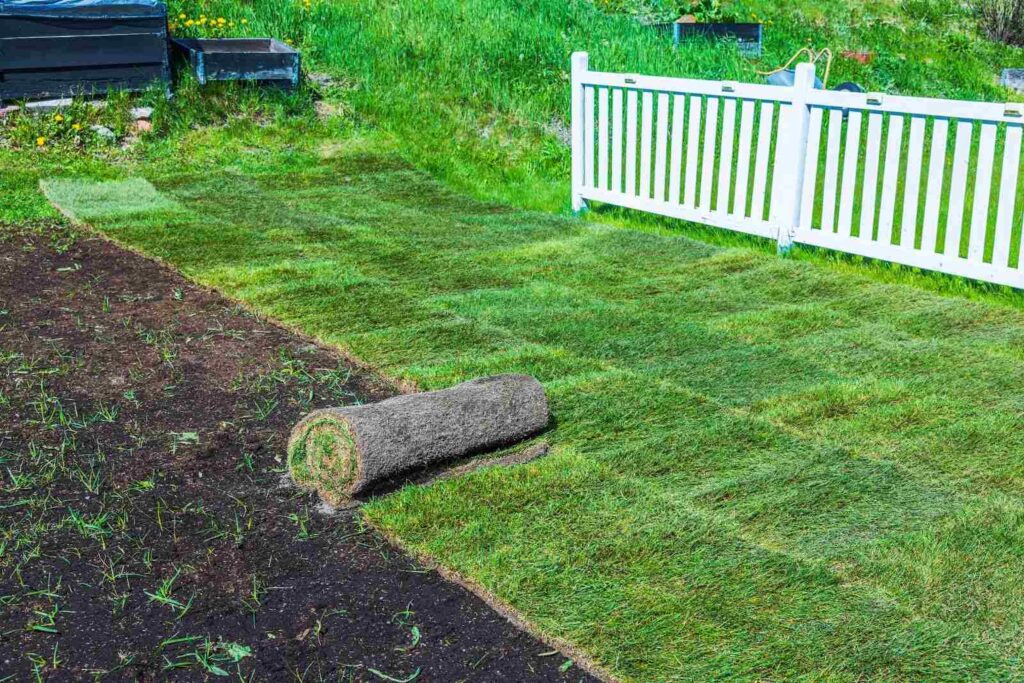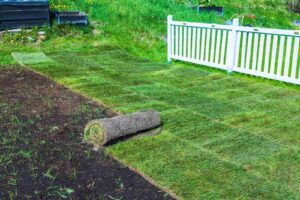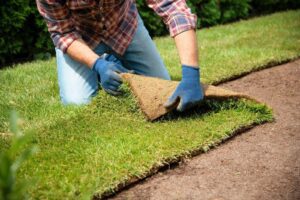Many homeowners see their worn-out lawns and ask, “Should I lay sod over my existing grass?” On the surface, this seems like a quick and easy fix: Skip digging, roll out new sod, and enjoy an instant green yard. The idea feels efficient.
However, this shortcut often creates bigger problems. Sod laid over old grass struggles to root. Without direct soil contact, the new grass dries out, grows unevenly, and fails to thrive. What starts as a time-saver turns into a costly mistake.
This blog explains why installing sod over grass leads to poor results. You’ll learn what happens when you skip proper preparation, how to ready your yard for fresh sod, and why experts always recommend starting with a clean slate. Whether you’re refreshing your lawn or tackling a full renovation, this guide helps you make the right choice for lasting results.
Why some homeowners consider installing sod over grass
Many homeowners see sod as the fastest path to a green, even lawn. The idea of placing new sod over existing grass feels convenient. Removing old turf requires effort, so skipping that step often seems like a practical way to reduce labor and finish the project quickly.
When lawns show signs of bare patches or weeds, rolling out sod appears to offer a clean fix without the hassle of tearing everything up. For those who want quick curb appeal, this option feels like an easy upgrade.
One of the biggest misconceptions suggests that new sod roots grow through existing grass and reach the soil beneath. In reality, sod requires direct contact with loose, nutrient-rich soil to thrive. Old grass blocks moisture, air, and nutrients from reaching the root zone. Instead of establishing strong roots, the sod weakens, dries out, and grows unevenly.
Although the shortcut sounds appealing, skipping proper preparation leads to poor results. Understanding why sod needs a solid foundation helps homeowners make better long-term choices for a healthy, vibrant lawn.
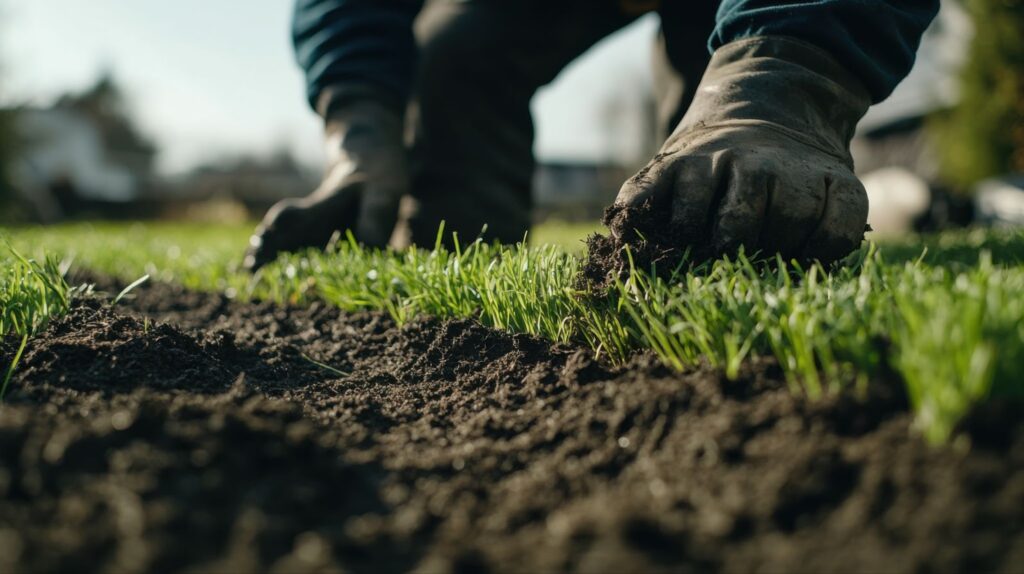
What happens if you lay sod over existing grass
Laying sod over existing grass leads to problems that weaken the lawn from the start. The old grass forms a barrier that blocks the new sod from reaching the soil. Without full contact, the roots struggle to grow, and the grass fails to thrive.
Roots must reach the soil to absorb water, nutrients, and oxygen. When sod sits on top of unprepared grass, it rests on a compact, suffocating layer. Water runs off instead of soaking in, and oxygen and nutrients stay trapped above the surface. These conditions slow root development and weaken the entire lawn.
Without consistent moisture, the sod dries out faster. It shifts, lifts, or sinks in spots, leaving uneven surfaces across the yard. Weakened root systems make the grass more likely to die under stress from heat or foot traffic.
Skipping proper preparation sets the lawn up for failure. Removing the old grass, loosening the soil, and clearing debris create the foundation sod needs to root deeply and grow into a thick, healthy lawn.
The right way to prepare for sod installation
Remove all existing grass and weeds before laying sod. Leftover turf creates a barrier that blocks roots from reaching the soil, which leads to poor growth and weak establishment. Clear the area completely so roots make direct contact with healthy ground.
After clearing the surface, loosen the soil with a rake or tiller. Break up compacted layers to promote deep root growth and proper water absorption. As you work, level the soil to eliminate dips that hold water and high spots that dry out too quickly. A smooth surface creates the foundation for even growth.
To improve the soil, add compost or quality topsoil. Mix it thoroughly to boost moisture retention and increase nutrient content. Rich, well-structured soil supports stronger roots and healthier turf.
Grade the area with a gentle slope away from buildings to direct water flow. Proper drainage prevents pooling, reduces disease risk, and helps sod stay anchored in place.
Make sure sod roots press firmly into the prepared soil. Full contact encourages faster root development, better hydration, and reliable long-term growth. Start with the right preparation, and your sod will reward you with a lush, durable lawn.
When you might get away with it (but still shouldn’t)
In rare cases, sod roots into the ground even when placed over thin, dying turf—especially if the soil underneath has received professional preparation. When the existing grass barely clings to life and the soil allows for excellent drainage, some roots may push through and survive. However, these outcomes rarely last.
Most homeowners lack the tools or experience to achieve the soil conditions required for this to work. Old turf blocks water and nutrients, leading to poor root development and failed establishment. Even when sod appears to take at first, problems like disease, uneven growth, or dead patches often follow.
Skip shortcuts. Remove the old lawn, prepare the soil properly, and ensure strong root-to-soil contact. Starting with the right foundation builds a lawn that grows fast, looks uniform, and holds up against weather, wear, and time.
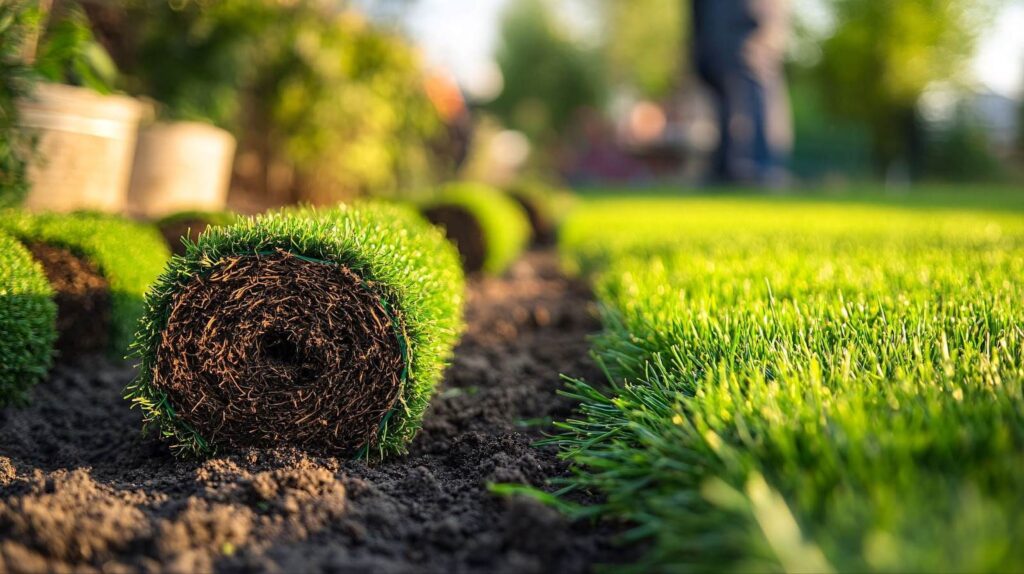
Professional sod installation tips
Choose a sod variety that fits your climate, soil, and lawn usage. Some grasses thrive in full sun, while others grow well in shaded or drought-prone areas. Match the grass type to your region for strong performance.
In northern climates, go with cool-season grasses like Kentucky bluegrass or tall fescue. In southern regions, select warm-season types such as Bermuda or zoysia.
Install sod when conditions support strong root growth. Early spring and early fall provide ideal moisture and temperature levels for rooting. Avoid laying sod during hot, dry periods or freezing conditions. Moderate weather helps new grass settle in with less stress and faster results.
After placing the sod, water it deeply to soak the soil beneath the roots. During the first two weeks, keep the sod moist with light, frequent watering. As roots develop, shift to fewer but deeper watering sessions. This approach trains roots to grow downward, building a more resilient lawn. Keep foot traffic off the area while the grass establishes to avoid shifting or damage.
With the right sod, proper timing, and attentive care, your lawn will root quickly and grow into a healthy, green landscape.
Get the best results with Monarch Sod
When you want to get it right the first time, trust Monarch Sod.
Monarch Sod provides high-quality, Utah-tested turf varieties, expert guidance, and professional sod installation. Our team understands local conditions and helps homeowners achieve lush, long-lasting lawns with less hassle. Whether you’re starting fresh or replacing worn-out grass, contact Monarch Sod for premium products and dependable service that deliver results.









